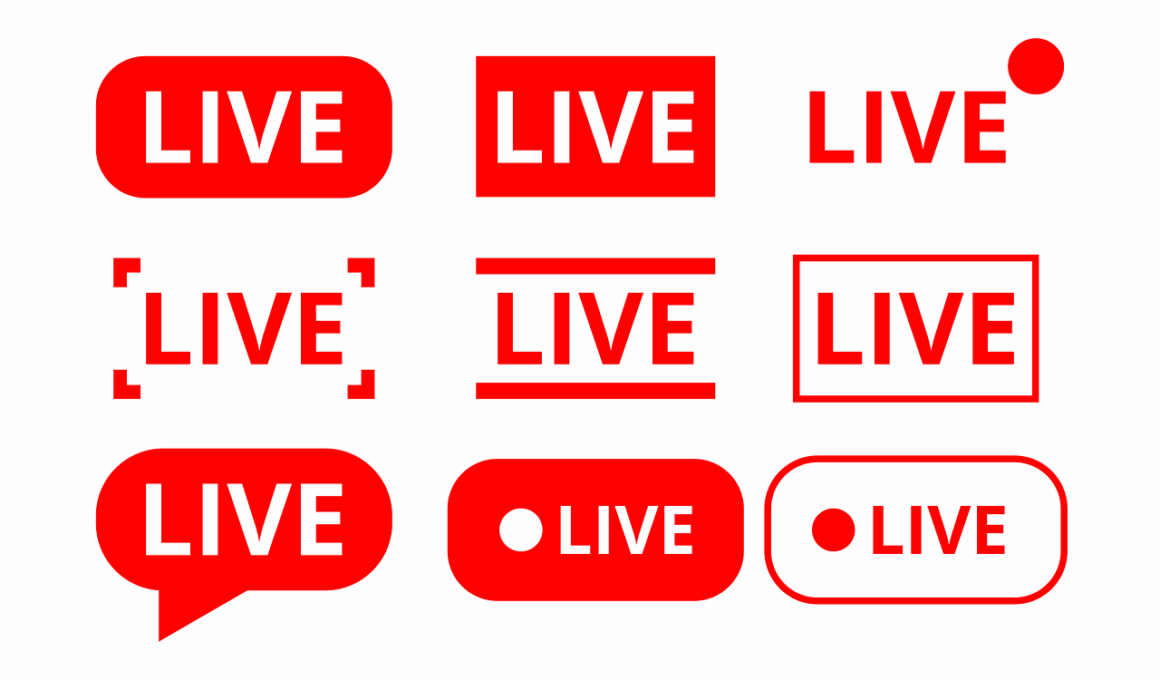Maximizing Your Content Output by Repurposing Live Streams Efficiently
In today’s content-driven world, being efficient with your content output is crucial. One of the most underutilized methods to achieve this is through content repurposing, especially from live streams. Live streaming platforms have become a significant medium, allowing creators to engage with their audiences in real-time. This direct interaction fosters a genuine connection and generates a wealth of content in a single session. Once the live stream concludes, the potential for repurposing that content is immense. One way to maximize the returns on your video is to transcribe the streamed event into a blog post. This offers an easily digestible and SEO-friendly format that can attract new viewers. Additionally, short clips from the live stream can be edited and shared on social media channels, providing instant engagement without requiring fresh content creation. The key is to identify the highlights of your stream, which can become micro-content pieces. By strategically repurposing your live streams, you not only save time but also expand your reach across various platforms.
Moreover, consider enhancing the original live stream by engaging in roundtable discussions with experts or industry peers afterward. Such discussions can reveal deeper insights into the topics covered, adding value to the initial live content. For instance, if you hosted a live Q&A session, gather some of the standout questions and answers, and create an informative video that dives deeper into those topics. This new content should complement the initial stream and provide additional perspectives, reinforcing your authority in that specific subject area. Additionally, create snippets of these discussions to share on social media platforms, increasing your engagement and driving traffic back to the original stream. You can also create infographics that summarize the key points made during both the live stream and the subsequent discussion. Visually appealing content encourages sharing and can serve as a stepping stone to convert viewers into loyal followers. With a bit of creativity, each live stream can yield multiple pieces of content that can be strategically released over time.
Another effective method is to create podcasts from your live streams. The audio format allows your audience to consume the content while multitasking, appealing to those who prefer listening over watching. By extracting the audio from your streams, you can easily format them into podcast episodes. This approach not only diversifies your content format but also taps into the growing podcast audience. Ensure to optimize each episode with relevant titles and descriptions to improve discoverability. You can host these podcasts on popular platforms where listeners already search for educational content in your niche. In addition to audio, consider implementing visual elements such as slide decks that can accompany your podcast episodes. This way, even audio-only listeners can feel engaged while having the option to view the slides if they choose. Promoting the podcast on the same social channels used during your live stream can create a seamless transition for your existing audience, encouraging them to engage with this new format. Consistency is key in building listener loyalty and expanding your content reach.
Transforming Live Streams into E-books
Transforming your live streams into e-books is an innovative way to maximize your content output. After conducting a live session, you likely have extensive insights and information that can cater to an audience looking for in-depth knowledge. By compiling these insights, grasping recurring themes, and adding additional context or case studies, you can construct a comprehensive e-book that delves into the topics discussed during your streams. This asset can then be offered to your audience as a lead magnet, enticing them to subscribe to your newsletter or provide contact information. In addition, it establishes your credibility as an authority in your niche when you offer well-researched, high-quality content. Make sure to design your e-book with interactive elements, such as clickable links to related articles or videos. This enhances the user experience, guiding them seamlessly from one piece of content to another. Creating landing pages to promote this e-book can further amplify your outreach. Regularly promoting it through your social media channels not only re-engages your existing audience but also attracts new subscribers.
It’s also essential to repurpose live streams into visually engaging content like infographics or quote cards. Viewers often remember information better when it’s presented visually, thus creating infographics that summarize key takeaways from your live streams can be highly impactful. Use tools like Canva to design visually appealing graphics that communicate the essence of your stream in a quick and engaging manner. These can be shared across various social media platforms to expand your reach, driving back traffic to the original live content. Similarly, creating smaller quote cards with thought-provoking statements from your streams can encourage engagement from your audience. Consider utilizing a consistent branding strategy across all visual content to establish a recognizable presence. Not only does this help to maintain brand consistency, but it also makes your content shareable and readily identifiable. Engage your audience further by encouraging them to share these visuals on their own platforms, enhancing your content visibility while expanding your reach exponentially. Over time, these strategies can significantly increase your content’s lifecycle.
Leveraging User-Generated Content
Leveraging user-generated content (UGC) is another brilliant way to repurpose live streams effectively. Encouraging your audience to share their thoughts and insights from your live sessions can provide you with authentic content that resonates with other viewers. By creating a community around your live streams, you can prompt audience members to submit their opinions or experiences related to the topics discussed. This not only fosters engagement but also provides you rich content to share in future communications. For instance, solicit testimonials or feedback about the effectiveness of the strategies you shared during the streams. You can compile this feedback and feature it in future promotional materials, reinforcing the value of your content. Additionally, consider creating highlight reels from submitted content, showcasing how your audience has applied what they learned from you. This can act as powerful testimonials that further encourage participation from others who may be reluctant to engage initially. The cycle of creating and sharing UGC builds a community feeling around your brand, enhancing loyalty and ongoing engagement.
Finally, continuously analyze the performance of your repurposed content to refine your strategies. Utilize analytics tools to track engagement metrics, observe user behavior, and understand what types of content resonate most effectively with your audience. By paying attention to which repurposed formats perform best, you can adjust your content creation strategies accordingly. Perhaps you’ll find that your audience prefers blog posts over videos or that podcasts drive more engagement than traditional written articles. Understanding your audience’s preferences enables you to adapt and optimize future live streams for greater impact. By continuously gathering feedback, testing various formats, and enhancing your repurposing approach, you are not only maximizing your content output but also ensuring greater relevance in your messaging. Moreover, maintaining flexibility in your strategy allows you to stay ahead of trends and shifts in content consumption. As you adapt and refine, you create a dynamic content ecosystem that engages users consistently while efficiently utilizing your original live stream efforts.
In today’s content-driven world, being efficient with your content output is crucial. One of the most underutilized methods to achieve this is through content repurposing, especially from live streams. Live streaming platforms have become a significant medium, allowing creators to engage with their audiences in real-time. This direct interaction fosters a genuine connection and generates a wealth of content in a single session. Once the live stream concludes, the potential for repurposing that content is immense. One way to maximize the returns on your video is to transcribe the streamed event into a blog post. This offers an easily digestible and SEO-friendly format that can attract new viewers. Additionally, short clips from the live stream can be edited and shared on social media channels, providing instant engagement without requiring fresh content creation. The key is to identify the highlights of your stream, which can become micro-content pieces. By strategically repurposing your live streams, you not only save time but also expand your reach across various platforms.


